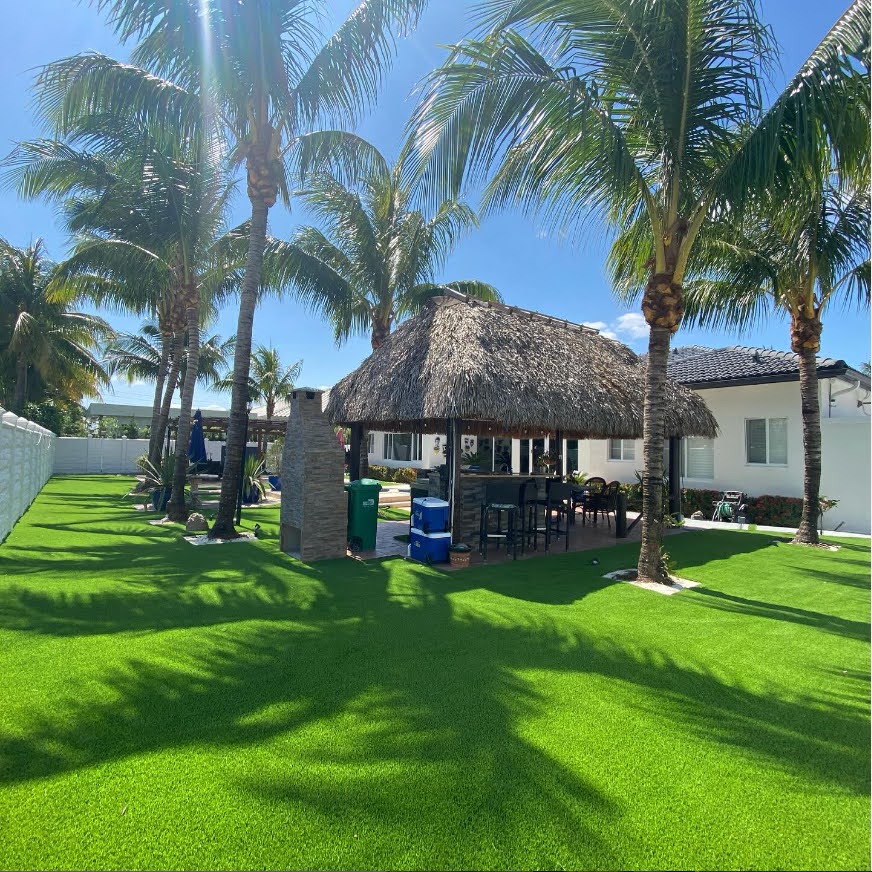Artificial grass, also known as synthetic turf, offers several environmental benefits compared to natural grass, making it an environmentally friendly choice in many situations. Here’s why:
- Conservation of Water: One of the most significant environmental benefits of synthetic turf is its ability to conserve water. Natural grass lawns require regular watering to stay green and healthy, especially in arid or drought-prone regions. By replacing natural grass with synthetic turf, homeowners and businesses can significantly reduce their water usage, easing the strain on local water resources and promoting water conservation.
- Elimination of Chemicals: Maintaining a natural grass lawn often involves the use of fertilizers, herbicides, pesticides, and other chemicals to promote growth and control weeds and pests. These chemicals can leach into the soil and groundwater, potentially harming ecosystems and wildlife. Artificial grass eliminates the need for these harmful chemicals, creating a safer and more eco-friendly outdoor environment.
- Reduction of Air Pollution: Lawn maintenance equipment such as lawn mowers, trimmers, and leaf blowers typically run on fossil fuels and emit pollutants into the air. By eliminating the need for mowing and other lawn care tasks, artificial grass helps reduce air pollution and greenhouse gas emissions associated with lawn maintenance activities.
- Decreased Energy Consumption: Natural grass lawns require regular mowing, watering, and maintenance, which can consume significant amounts of energy, especially if powered by gas-powered equipment. In contrast, artificial grass requires minimal maintenance and no mowing, resulting in lower energy consumption and reduced carbon emissions over time.
- Longevity and Durability: High-quality artificial grass is designed to withstand heavy foot traffic, UV exposure, and extreme weather conditions without fading, thinning, or requiring replacement for many years. This longevity reduces the need for frequent lawn replacements and the associated environmental impact of manufacturing, transportation, and disposal of natural grass sod.
- Preservation of Natural Habitats: Traditional lawns often require large amounts of land, water, and resources to maintain, leading to habitat destruction and loss of biodiversity. By replacing natural grass with artificial turf, homeowners and businesses can help preserve natural habitats and ecosystems while still enjoying a green and functional outdoor space.
- Reduced Yard Waste: Natural grass lawns produce yard waste such as grass clippings, leaves, and branches that need to be collected, bagged, and disposed of regularly. Artificial grass eliminates the need for yard waste collection and disposal, reducing the burden on local waste management systems and landfills.
Overall, artificial grass offers numerous environmental benefits that contribute to a more sustainable and eco-friendly outdoor landscape. By conserving water, reducing chemical usage, minimizing air pollution, and promoting habitat preservation, synthetic turf helps protect the environment and create healthier outdoor spaces for communities to enjoy.
4714 Cypress Tree Dr, Tampa, FL 33624, USA
(813) 212-7160
